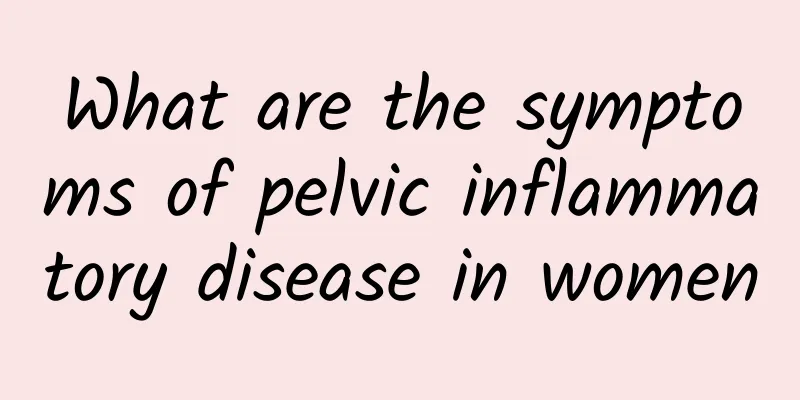Areola itchy, fatigued and depressed before menstruation? Nutritionist: Vitamin B and other nutrients are necessary

|
In the first half of a woman’s life, she will inevitably be bothered by her period! Women not only have to deal with abdominal distension, pain and discomfort during menstruation, but also breast swelling and itching of the areola, especially before menstruation. They may also experience other physical and mental discomforts, including fatigue and depression. This is really disturbing and can be called "premenstrual syndrome." To alleviate these premenstrual syndrome discomforts, nutritionists remind that moderate supplementation of vitamin B, vitamin D, and foods containing tryptophan such as bananas and milk are all good methods. Common symptoms of PMS: depression, weight gain, itching around the areola, fatigue, etc. Premenstrual syndrome (PMS) is a psychosomatic disorder, also known as premenstrual tension (PMT). It is common for women to experience physiological and psychological symptoms one to two weeks before their period. The severity of symptoms varies from person to person, and most often occur during and after menstruation. Common symptoms include: irritability, anxiety, depression, weight gain, craving for food, acne, itching around the areola, fatigue, swelling of the lower abdomen and chest, etc. About 50% to 80% of girls have mild to moderate problems in this regard. A small number of women (3-8%) have more severe premenstrual distress and require treatment evaluation and medication. Generally, menstruation lasts about 23-35 days, which is considered normal. The algorithm for the menstrual cycle is as follows: the first day of menstruation is the first day of the cycle, the first 14 days are the so-called follicular phase, and around the 14th day is the ovulation day. The follicular phase is mainly dominated by estrogen, a female hormone. During this period, premenstrual syndrome generally does not occur. The second half of the cycle, from 14 days later to the next menstrual period, is called the luteal phase. At this time, progesterone begins to be secreted, especially in the late luteal phase, which is 7-10 days before menstruation (2-3 days for some people). Women are particularly sensitive to physical and mental stress, and are prone to premenstrual syndrome symptoms of varying severity. Causes of PMS: imbalance in the ratio of progesterone and estrogen, unbalanced nutrition, etc. Hong Ruopu, a nutritionist at the Zhongxiao branch of Taipei Municipal United Hospital, said that the causes of premenstrual syndrome are complex and may be related to an imbalance in the ratio of progesterone and estrogen. In addition, unbalanced nutrition (high fat or excessive intake of sugar and salt), vitamin B6 deficiency, thyroid endocrine disorders, calcium deficiency, physical and mental stress, poor sleep quality, environmental pollution, etc. may all affect premenstrual syndrome. To relieve premenstrual syndrome, take more foods rich in B vitamins, vitamin D and tryptophan To relieve premenstrual syndrome, nutritionist Hong Ruopu recommends changing your lifestyle and adjusting your diet, avoiding excessive intake of salt and pickled foods, which can reduce limb edema and reduce the burden on the heart. However, caffeinated beverages such as coffee, tea, and cola can easily make people irritable and affect sleep, so they should be avoided as much as possible. In addition, alcoholic beverages, spicy foods, etc. should be avoided. Eat more foods rich in B vitamins, vitamin D, minerals such as calcium, magnesium, and tryptophan, such as brown rice, whole wheat bread, walnuts, sesame seeds, bananas, milk, etc. Maintaining proper exercise helps the body fight stress. It is recommended to exercise at least 5 days a week for at least 30 minutes each time, which can improve premenstrual syndrome. In addition, painkillers or anti-inflammatory drugs can relieve physical symptoms. For severe patients, birth control pills or diuretics can also be of some help. The cause of premenstrual syndrome is unknown, but consuming too much salt, alcoholic beverages and other foods will aggravate the symptoms. It is currently believed that the root cause of the symptoms is related to hormonal changes. For example, estrogen will decrease significantly in the second half of the menstrual period, which will cause psychological changes. Diagnosis requires continuous recording of emotional and physical activity before menstruation. Having a checklist to record monthly symptoms can help with syndrome diagnosis. Before a diagnosis can be made, other diseases that may cause similar symptoms must be ruled out. Premenstrual syndrome is more common in the following groups Premenstrual syndrome usually occurs in women between the ages of 25 and 35, and may not occur during every menstrual cycle. (1) Women aged 25-35 years old with irregular menstruation. (2) Those with fluctuating weight, unbalanced diet, and smoking and drinking habits. (3) People who are under special physical and mental stress and who lack exercise for a long time. (4) Those who have experienced pregnancy, miscarriage, or postpartum depression. (5) Those who have a history of depression or anxiety, or have an unhappy marital relationship. (6) The mother or sister also has similar premenstrual symptoms. (7) Those who cannot tolerate birth control pills or hormone supplements and feel extremely uncomfortable. Severe premenstrual syndrome may be related to postpartum depression or menopausal disorders and should be treated by a doctor In addition, women with severe premenstrual syndrome or premenstrual dysphoria are more likely to suffer from postpartum depression, menopausal disorders, and various physical and mental illnesses than the average person. If these conditions occur, you need to follow your doctor's instructions and take medication to prevent the disease from happening again. Even if medication is used for treatment, low doses of antidepressants are used, which can adjust the physical condition in the short term and are quite safe. It is generally recommended to take it daily for 2 menstrual cycles (about 2 months), and then change to taking it when symptoms occur before menstruation. According to research, nearly 80% of women experience discomfort symptoms 7-10 days before their menstrual period, and these physical, psychological and behavioral symptoms continue until the menstrual period arrives. The cause of PMS is still unknown, but most hypotheses suggest that it is caused by changes in the body's levels of serotonin, estrogen, or progesterone. Research suggests that adequate nutrition can help relieve symptoms. |
Recommend
What are the common symptoms of ovarian cysts?
Ovarian cysts are a disease that many people have...
Experts introduce some of the earliest symptoms of ectopic pregnancy
Everyone has heard of ectopic pregnancy. But how ...
How long after curettage can I have sex? The harm of having sex too early after curettage
For most female friends, they have certain gyneco...
Two common early symptoms of cervicitis
Early cervicitis is a relatively mild condition. ...
What shampoo can be used for uterine fibroids? What skin care products are suitable for uterine fibroids?
Uterine fibroids are a common benign tumor in wom...
What causes dysmenorrhea?
Dysmenorrhea is not a strange thing for female fr...
What are the diagnostic criteria for dysmenorrhea?
Dysmenorrhea is a common disease in our daily lif...
What to do if there is cervical erosion during induction of labor
When women need an abortion when they are unexpec...
Don't get into the misunderstanding of cervical erosion
What people often call cervical erosion is actual...
What are the commonly used drugs for bacterial vaginosis?
Bacterial vaginosis is a disease caused by a mixe...
What are the symptoms and reactions of menstruation?
Women usually experience a series of physical and...
Which hospital is the best for treating vulvar itching?
Vulvar pruritus is a common gynecological disease...
What are the symptoms of pelvic inflammatory disease?
Patients with pelvic inflammatory disease all kno...
There are many factors that lead to ectopic pregnancy in women.
The occurrence of female ectopic pregnancy is cau...
Tell you: Who is not suitable for medical abortion?
Now in our lives, many female friends have unexpe...









